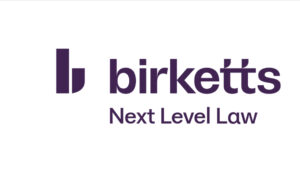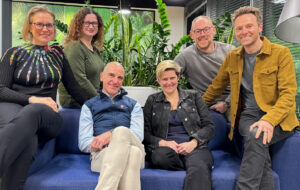BARRATT DEVELOPMENTS LAUNCHES NEW FLAGSHIP ‘Z HOUSE’ ON JOURNEY TOWARDS REDUCING CARBON FOOTPRINT

Barratt Developments, the UK’s largest housebuilder, is building a unique flagship zero carbon home concept called the Z House that will be occupied and monitored to assess its performance.
MWoct21-188935 – BG – The Z House is based at the University of Salford and is the first to surpass FHS – Eion Reynolds pictured
It will be the first new home in the country built by a major housebuilder to go beyond the new Future Homes Standard[1] by delivering a carbon reduction of 125%.[2] Last year Barratt announced that all of its new homes will be zero carbon by 2030 and this flagship concept house is the first step in achieving that.
It is being developed as an industry showcase home to demonstrate what is achievable, particularly from a mainstream, volume housebuilder. The new home is being built with over 40 leading industry partners from across the housebuilding, sustainability and technology sectors, all helping to broaden knowledge in zero carbon living with the lessons learnt from the construction being shared across the industry. Partners include the University of Salford, GTC, British Gypsum, Octopus, Nissan and Mitsubishi, plus a host of other important suppliers (full list at end of press release).
The new house will feature cutting edge technology such as overhead infrared panels that provide instant zero carbon heat, new air powered showers that will save families hundreds of pounds per year in water and heating bills, plaster which eliminates pollutants giving cleaner, healthier air, a fridge which keeps the right humidity resulting in 60% less food wastage, and innovative heated skirting boards delivering 10% more heat than traditional radiators whilst also saving space.
It will be constructed using the latest building methods incorporating Modern Methods of Construction (MMC) such as such as closed panel timber frames with highly insulated cladding, factory fitted windows and offsite panelised masonry ground floor wall panels, reducing the need for bricklayers and the time it takes to build by half. And it will include the most modern sustainable housing technology such as an air source heat pump, EV charging points, PV solar panels and battery storage.
Barratt challenged its supply chain partners to bring-in the most cutting-edge products into the house to reduce its embodied carbon. These include electronic taps that can reduce water usage by 80%, kitchen cabinets made using 100% recycled chipboard plus reused coconut husk material for the handles, and a smart electricity tariff which automatically shifts energy usage to access the cheapest rates.
There will also be a dedicated knowledge and energy hub built into the garage space to display and showcase products and technologies used within the Z House. Here, visitors to the house will be able to monitor digital displays showing visuals of live energy use via a monitoring network which is built into the fabric of the home.
Set on the main campus at the University of Salford, the new Z House is based on the popular ‘Alderney’ style home by Barratt Homes. To ensure the house operates in the ‘real-world’ it will be occupied by an academic from the University of Salford, meaning its energy consumption can be measured and displayed in the Knowledge Hub for all to see.
Outside of the Z House there will be a biodiversity garden featuring nests for bats and swifts, a wildlife pond, hedgehog highways and green wall. The team are using experts from RSPB and Barratt to help promote wildlife and nature at the house, with the garden achieving a gold rating from RSPB.
David Thomas, Chief Executive of Barratt Developments, said: “We want to showcase what can be done to deliver zero carbon living using the latest technologies and working with the best industry partners. Ultimately, the aim is to find solutions to enable the industry to build high quality, zero carbon homes that customers love, at scale. We can then share this knowledge to help the industry deliver the future of sustainable housing.”




